If you are looking for something that is going to impress no matter what age, then it’s time to dive into the wonderful genus of Ferocactus. The name is definitely not misleading, either!
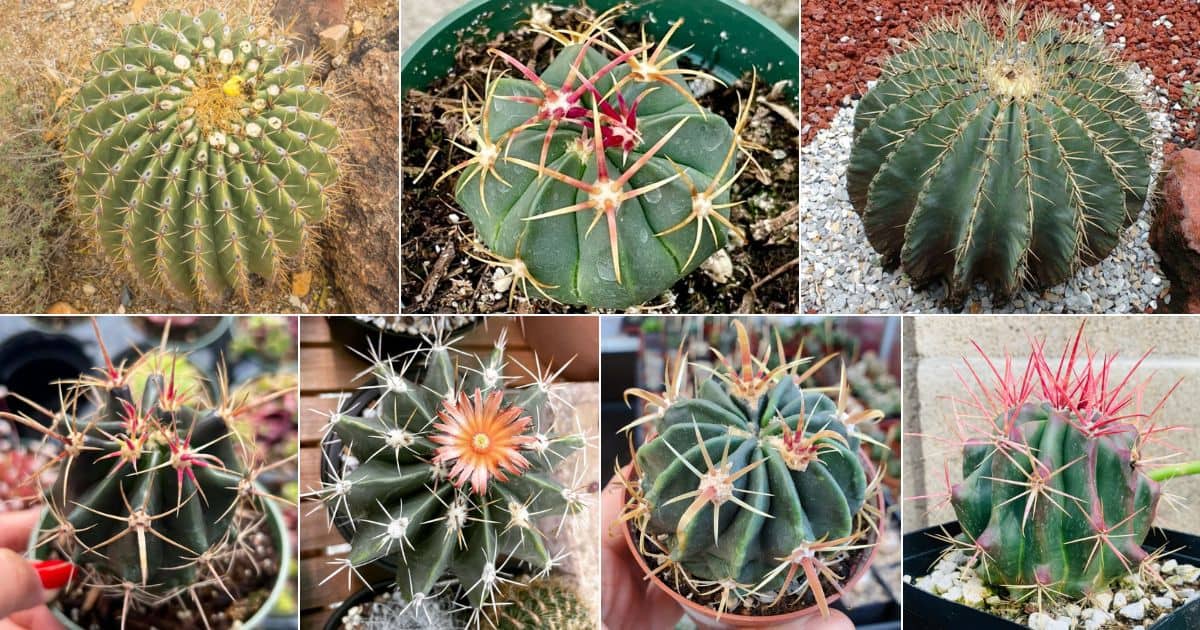
The name comes from the Latin word ferox and the Greek word kaktos. If you can guess, ferox means ‘fierce’, and kaktos means ‘thistle.’ From a distance, they may look fuzzy, but up close, they are covered in painful spines that vary in width, color, and how much of the stem they cover.
Jump to:
- 1. Ferocactus victoriensis
- 2. Ferocactus gracilis coloratus
- 3. Ferocactus wislizeni ssp. herrerae
- 4. Ferocactus hamatacanthus
- 5. Ferocactus flavovirens
- 6. Ferocactus glaucescens
- 7. Ferocactus emoryi ssp. rectispinus
- 8. Ferocactus fordii
- 9. Ferocactus alamosanus
- 10. Ferocactus latispinus
- 11. Ferocactus macrodiscus
- 12. Ferocactus peninsulae
- 13. Ferocactus pilosus
- 14. Ferocactus chrysacanthus
- 15. Ferocactus cylindraceus
1. Ferocactus victoriensis
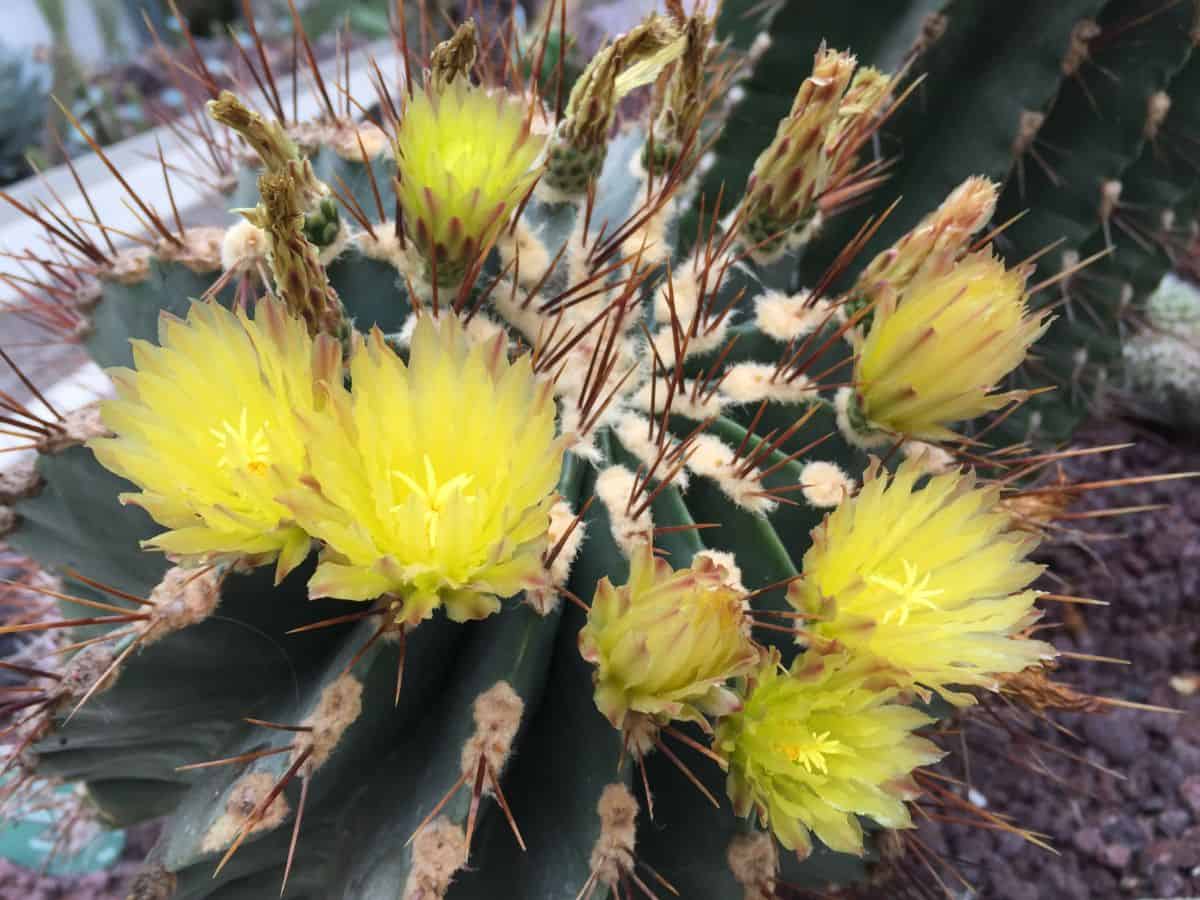
| Maximum Height: | Up to 40 inches tall |
| Maximum Width: | Up to one foot |
| Watering Needs: | Bottom water weekly if possible. If in the ground, water close to the ground. Prone to rot. |
| Soil Needs: | Grows in most soil types. |
| Light Needs: | Full sun to partial shade |
| Hardiness Zone(s): | Zone 9 and up |
| Spine Type and Ribs: | Firm spines that get up to 5 cm; 13 - 21 ribs |
| Bloom Type: | Daisy-like and bright yellow |
Let’s start with the more common F. victoriensis. This species is a great collectible and one of the easiest of this species to grow. Compared to others in this genus, it is considered to be more cylindrical in form as it grows older. The spines are rather tame (you’ll see as we go along), and the flowers are an almost translucent yellow.
2. Ferocactus gracilis coloratus
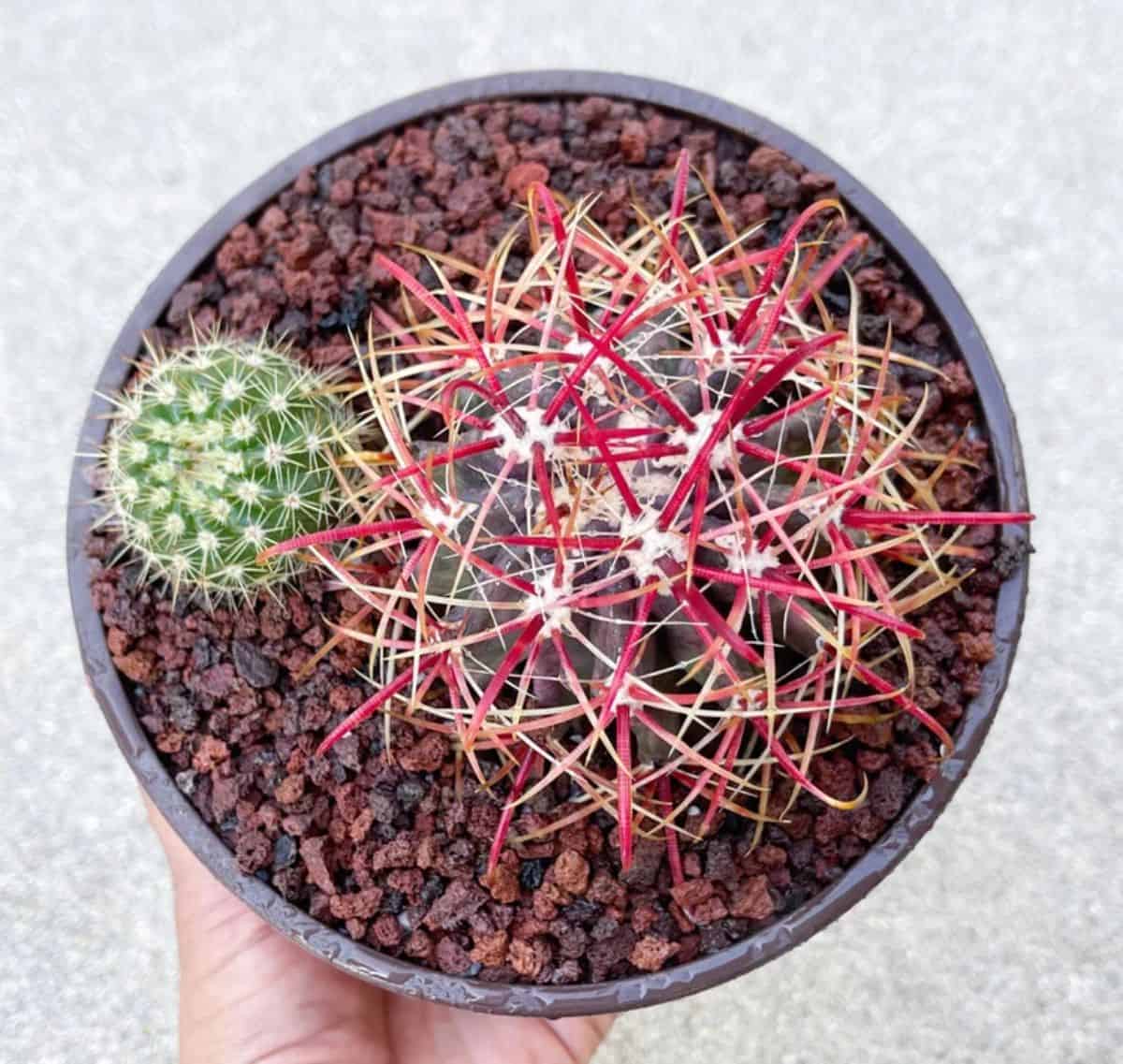
Buy it from:
| Maximum Height: | Up to 4 feet |
| Maximum Width: | Up to one foot |
| Watering Needs: | Bottom water weekly if possible. If in the ground, water close to the ground. Prone to rot. |
| Soil Needs: | Grows in most soil types. |
| Light Needs: | Full sun to partial shade |
| Hardiness Zone(s): | Zone 9 and up |
| Spine Type and Ribs: | Ribbed red spines flattened to a dagger-like shape. Can curve like a hook; 16 - 24 ribs |
| Bloom Type: | Orange with red tips; develops red stripes down the center. |
This species is not uncommon; however, it is one of the more brightly colored species. Red seems to be a very common color in the ferocactus genus, and gracilis takes this color to the max. The spines are absolutely massive with striking red coloration that can almost get to a hot pink point. Both radial and primary spines are this color. Some variants have red blooms, while others are going to have intense orange flowers.
3. Ferocactus wislizeni ssp. herrerae
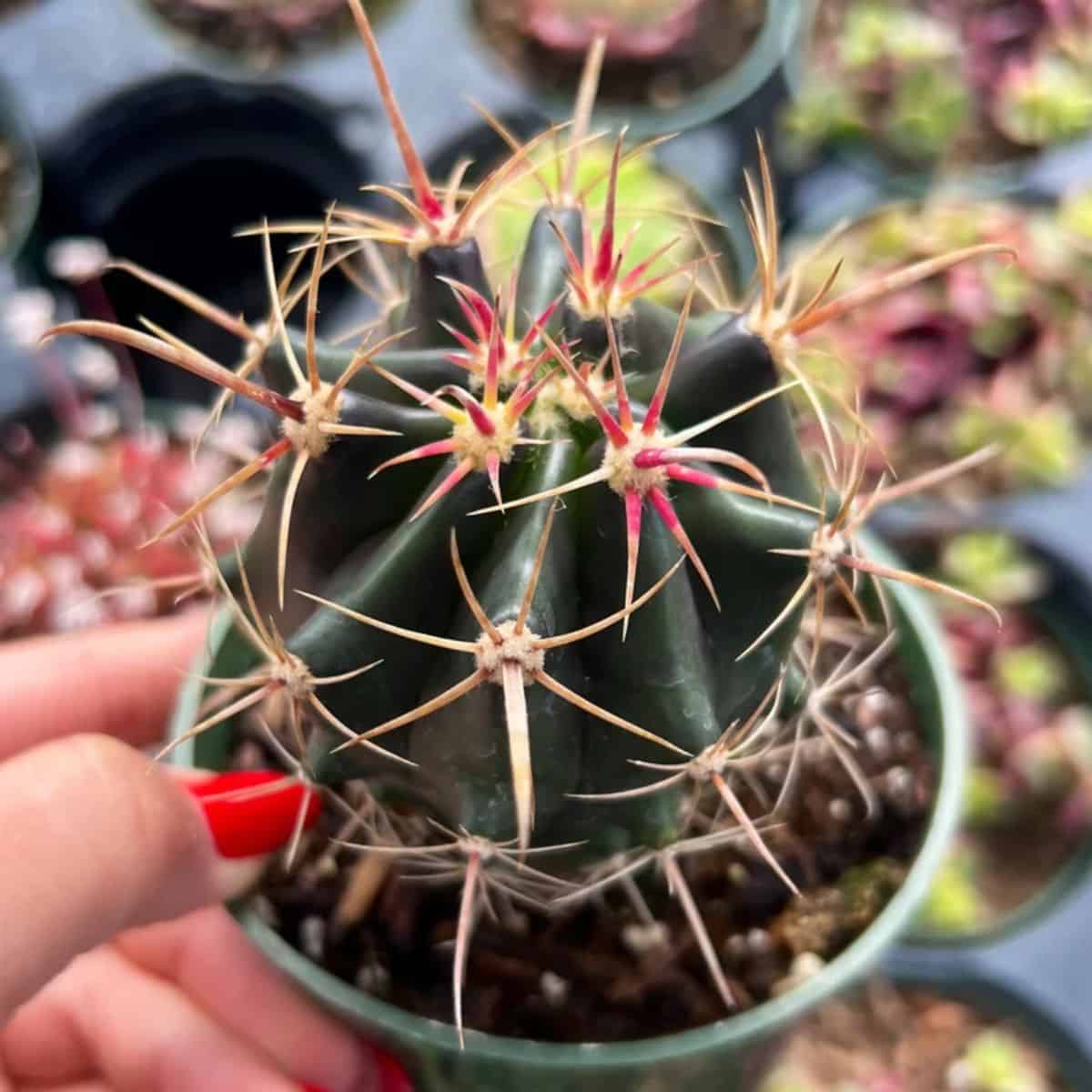
Buy it from:
| Maximum Height: | Up to 10 feet in the wild |
| Maximum Width: | Up to 16 inches |
| Watering Needs: | Bottom water weekly if possible. If in the ground, water close to the ground. Prone to rot. |
| Soil Needs: | Grows in most soil types. |
| Light Needs: | Full sun to partial shade |
| Hardiness Zone(s): | Zone 9 and up |
| Spine Type and Ribs: | One central, flattened, and hooked spine with radial spines; 13 ribs that can spiral |
| Bloom Type: | Daisy-like, pale salmon color with a red vertical stripe on each petal |
The Twisted Barrel Cactus could be considered one of the most impressive out of the genus. There are very few species that take on a whorl-like shape, such as the Twisted Barrel. Spines towards the top that are fresh will be more hooked than older spines, and they will also be a little darker. The double-layered and daisy-looking flowers take on more pale colors than other species.
4. Ferocactus hamatacanthus
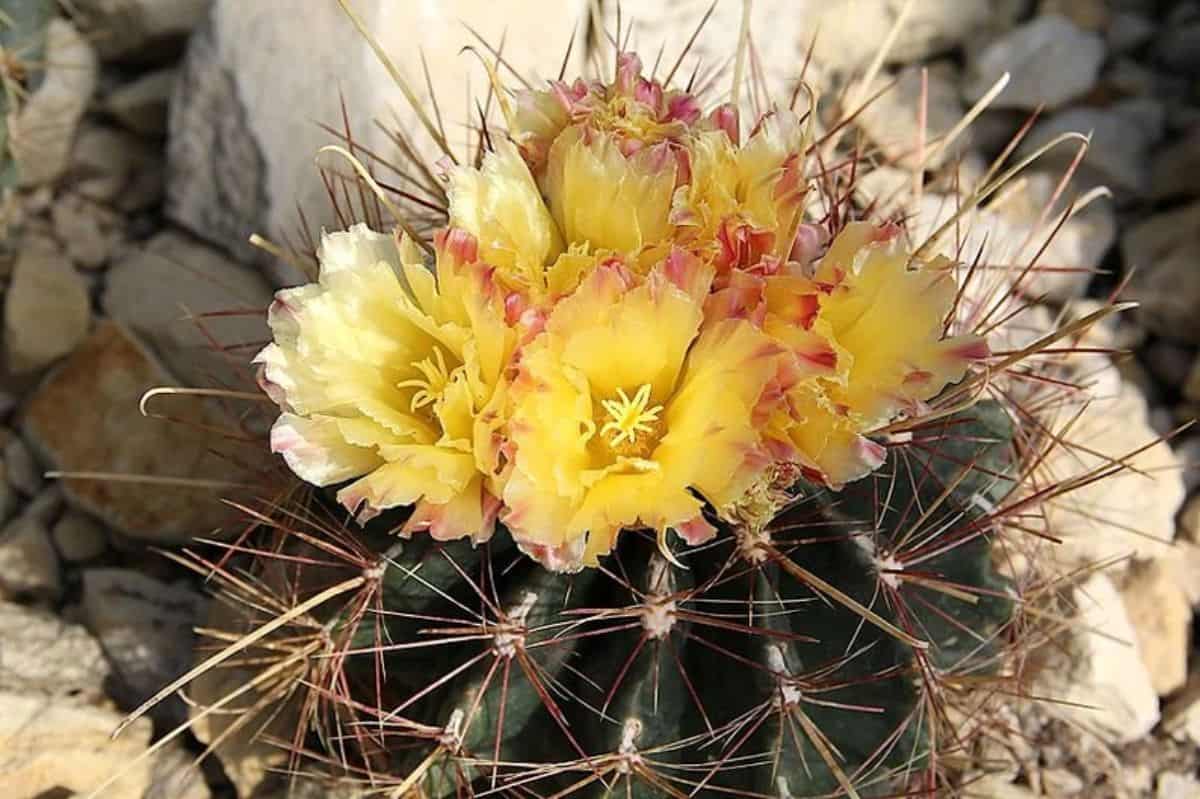
Buy it from:
| Maximum Height: | Up to 2 feet |
| Maximum Width: | Up to one foot |
| Watering Needs: | Bottom water weekly if possible. If in the ground, water close to the ground. Prone to rot. |
| Soil Needs: | Grows in most soil types. |
| Light Needs: | Full sun to partial shade |
| Hardiness Zone(s): | Zone 9 and up |
| Spine Type and Ribs: | Dominantly red and firm spines with radial spines that hide the stem; 10 - 13 ribs |
| Bloom Type: | Ruffled petals that are buttery yellow |
Turk’s Head is very different from the more commonly known Turk’s Cap. Rather than growing and flowering only at the top (producing a large blooming stalk over time), the flowers and fruit grow along the sides and top of this species. While the spines are not as large as others, the primary spines give a red haze to the species, and the straw-colored radial spines create a spidery case around the stem.
5. Ferocactus flavovirens
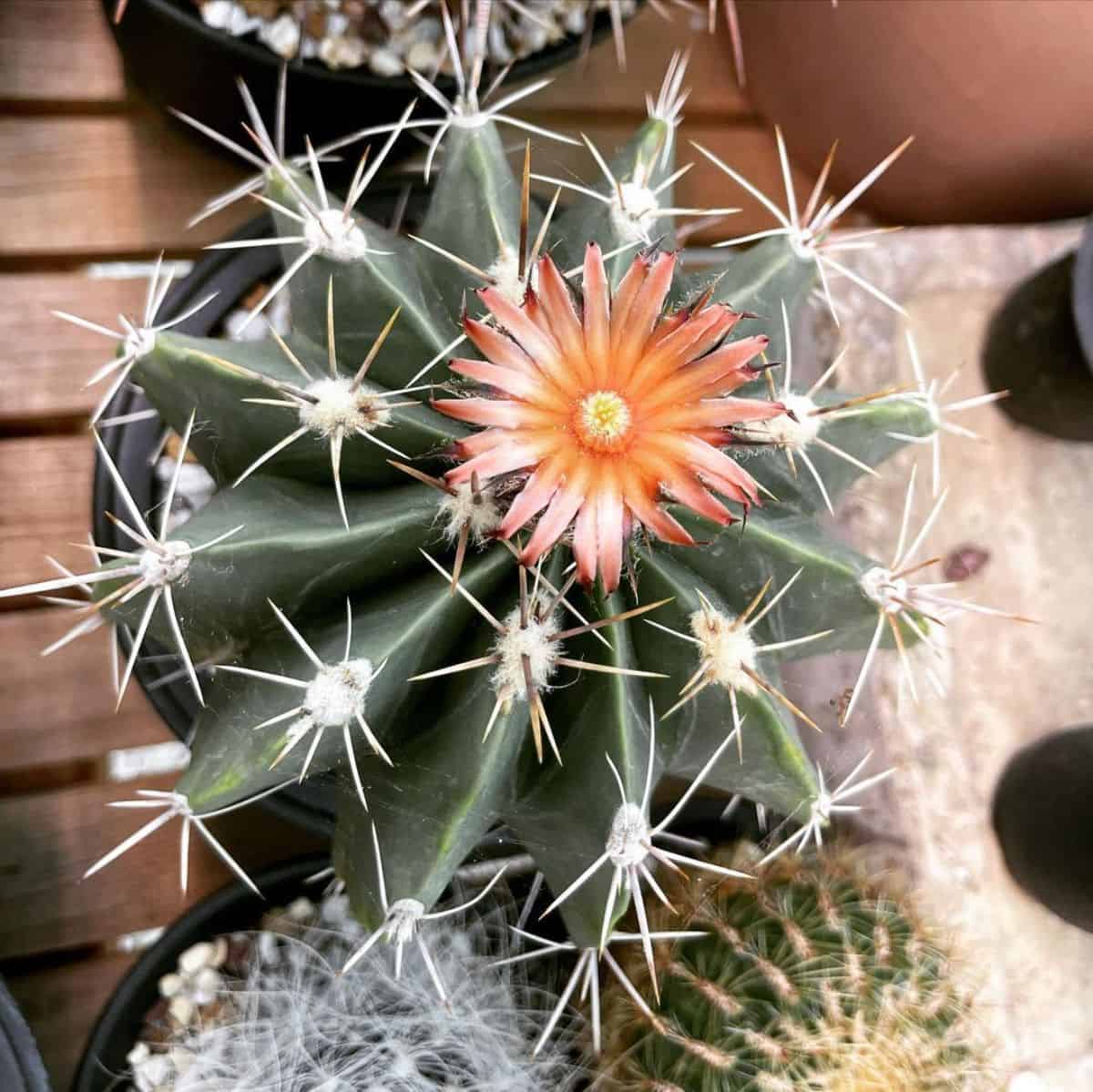
Buy it from:
| Maximum Height: | Up to 16 inches |
| Maximum Width: | Up to 8 inches |
| Watering Needs: | Bottom water weekly if possible. If in the ground, water close to the ground. Prone to rot. |
| Soil Needs: | Grows in most soil types. |
| Light Needs: | Full sun to partial shade |
| Hardiness Zone(s): | Zone 9 and up |
| Spine Type and Ribs: | A single central spine that curves into a hook as it matures with radial spines that are variegated; 13 ribs |
| Bloom Type: | Yellow-red funnel-shaped flowers |
This little joyous species forms mounds that can get over four feet wide and three feet high. It starts off as a singular stem but then begins to branch at the base and grow on top of itself. One of the major unique features of this species is the radial spines: they are technically variegated, but I prefer to say that they look like little zebra spines!
6. Ferocactus glaucescens
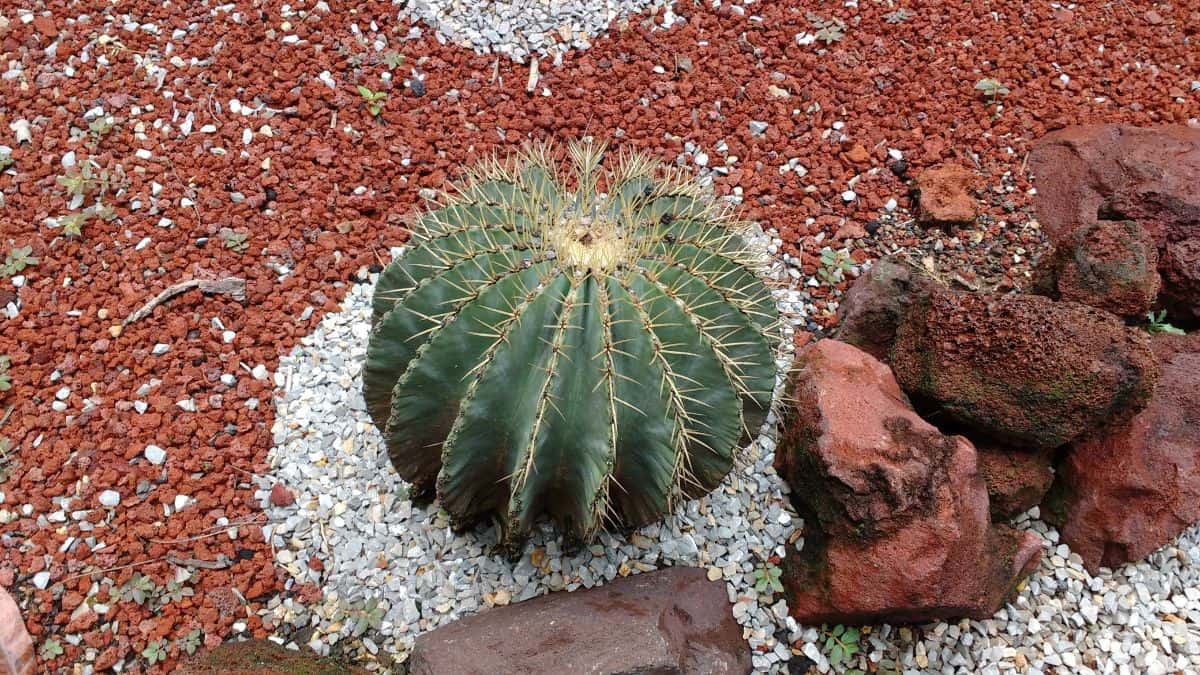
Buy it from:
| Maximum Height: | Up to 2 feet |
| Maximum Width: | Up to 2 feet |
| Watering Needs: | Bottom water weekly if possible. If in the ground, water close to the ground. Prone to rot. |
| Soil Needs: | Grows in most soil types. |
| Light Needs: | Full sun to partial shade |
| Hardiness Zone(s): | Zone 9 and up |
| Spine Type and Ribs: | 1.5 inch long, pale yellow; 11 - 15 ribs |
| Bloom Type: | Funnel-shaped and bright yellow |
The Blue Barrel Cactus is another starchild of the genus. With the beautifully blue-tinted skin of the stem accented with both bright yellow flowers and pale yellow spines, it is truly a great collectible. Unlike several others in the genus, this species does not have a net that is created by its spines.
7. Ferocactus emoryi ssp. rectispinus
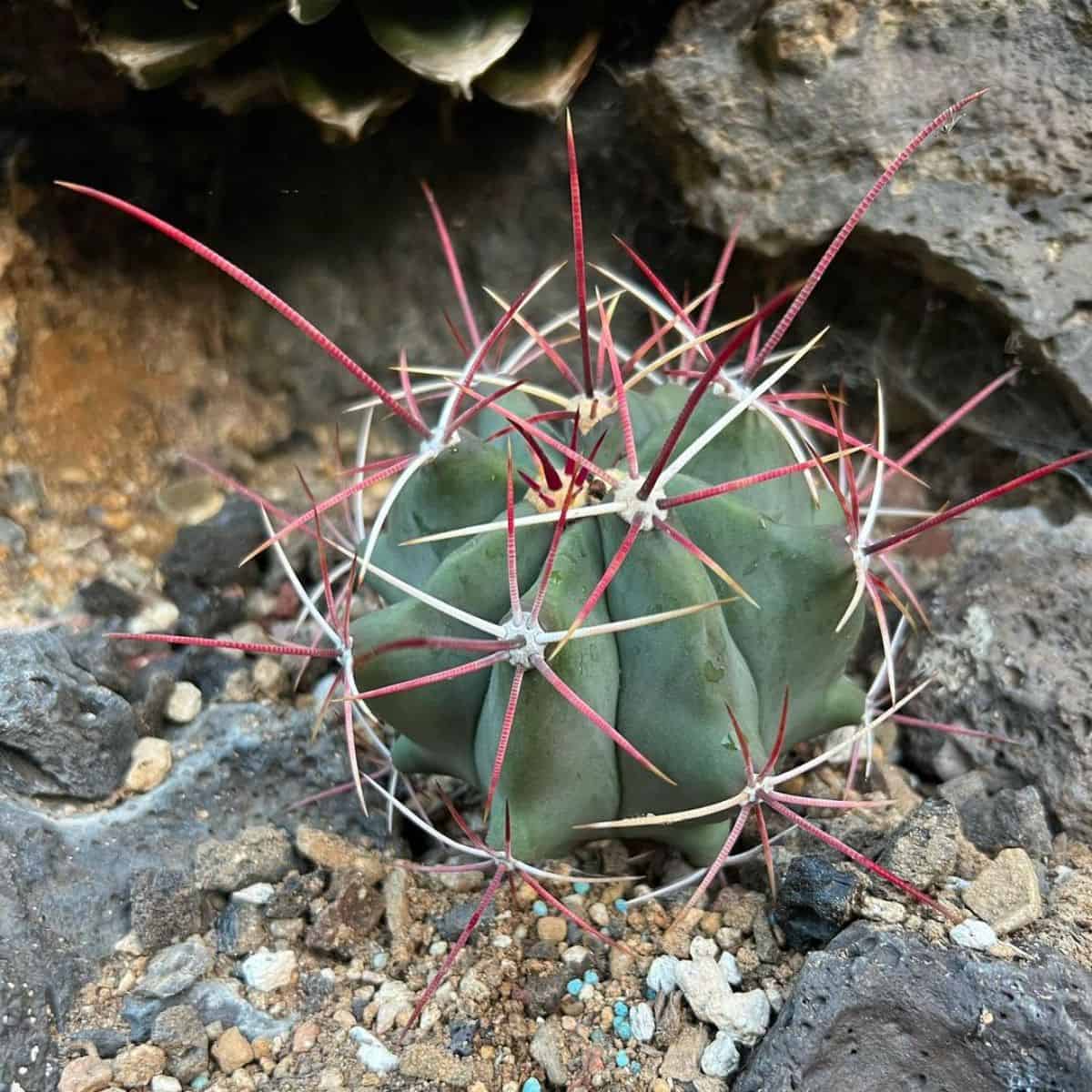
Buy it from:
| Maximum Height: | Up to 6.5 feet |
| Maximum Width: | Up to 2 feet |
| Watering Needs: | Bottom water weekly if possible. If in the ground, water close to the ground. Prone to rot. |
| Soil Needs: | Grows in most soil types. |
| Light Needs: | Full sun to partial shade |
| Hardiness Zone(s): | Zone 9 and up |
| Spine Type and Ribs: | One central, rigid spine up to 10 inches long with 5 plus radial spines; 15 - 21 |
| Bloom Type: | Larger flowers, even on young specimens, light yellow with faded pink centers on each petal |
Also known as the Straight Spine Barrel, or Long Spined Barrel Cactus, this solitary species has the largest spines in the genus. They can get up to ten inches in length, meaning that they need a wide berth both by humans, animals, and other plants. The only time you will see this species' branch is if it has experienced a wound along its stem.
8. Ferocactus fordii
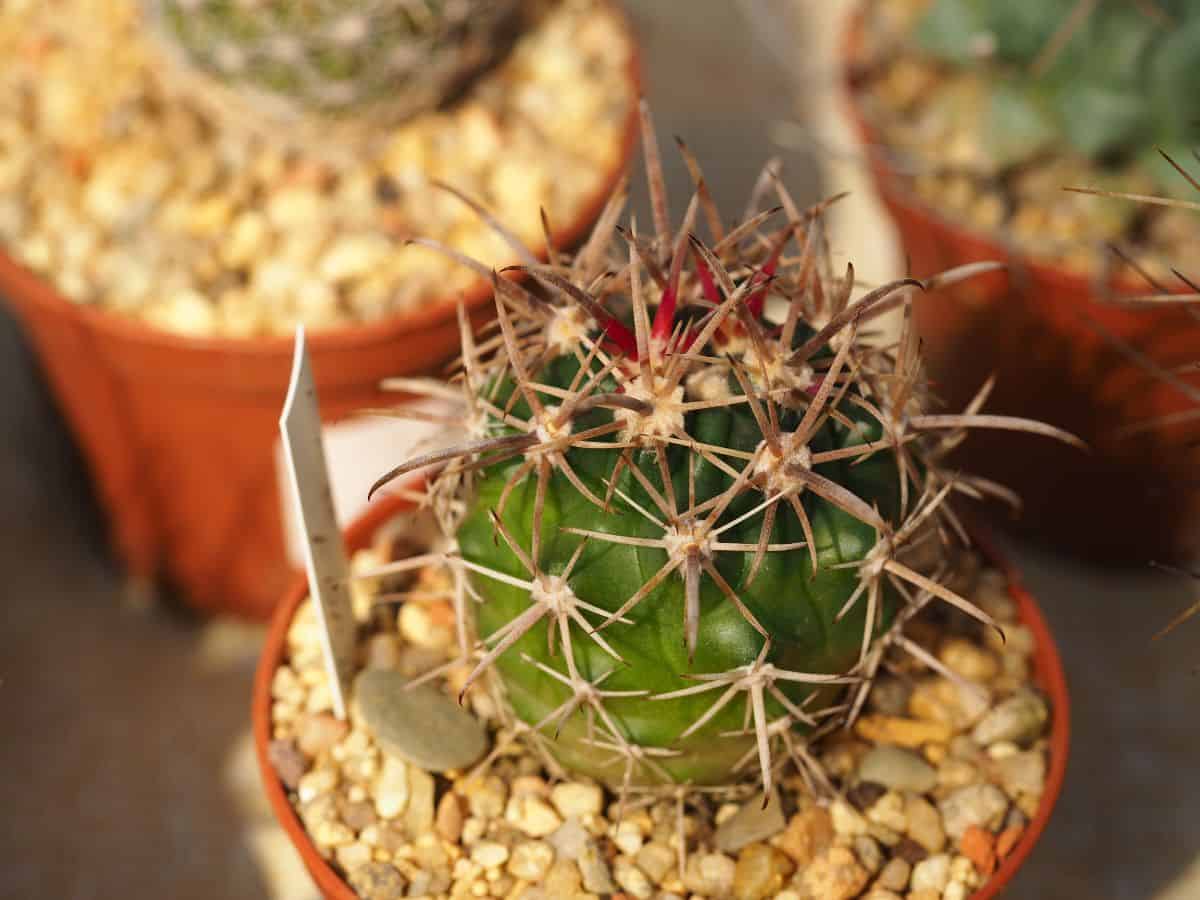
Buy it from:
| Maximum Height: | Up to 16 inches |
| Maximum Width: | Up to 12 inches |
| Watering Needs: | Bottom water weekly if possible. If in the ground, water close to the ground. Prone to rot. |
| Soil Needs: | Grows in most soil types. |
| Light Needs: | Full sun to partial shade |
| Hardiness Zone(s): | Zone 9 and up |
| Spine Type and Ribs: | Radial spines, up to 15 per areole; 21 ribs with little variation |
| Bloom Type: | Light pink to maroon with undulated petals |
With a dip at the top, fordii tends to get as broad as it does high. The spines are ribbed and straw-colored, and all tend to be radial. Unlike other species that have some variation in how many ribs they grow, this species rarely goes outside of the realm of 21 ribs.
9. Ferocactus alamosanus
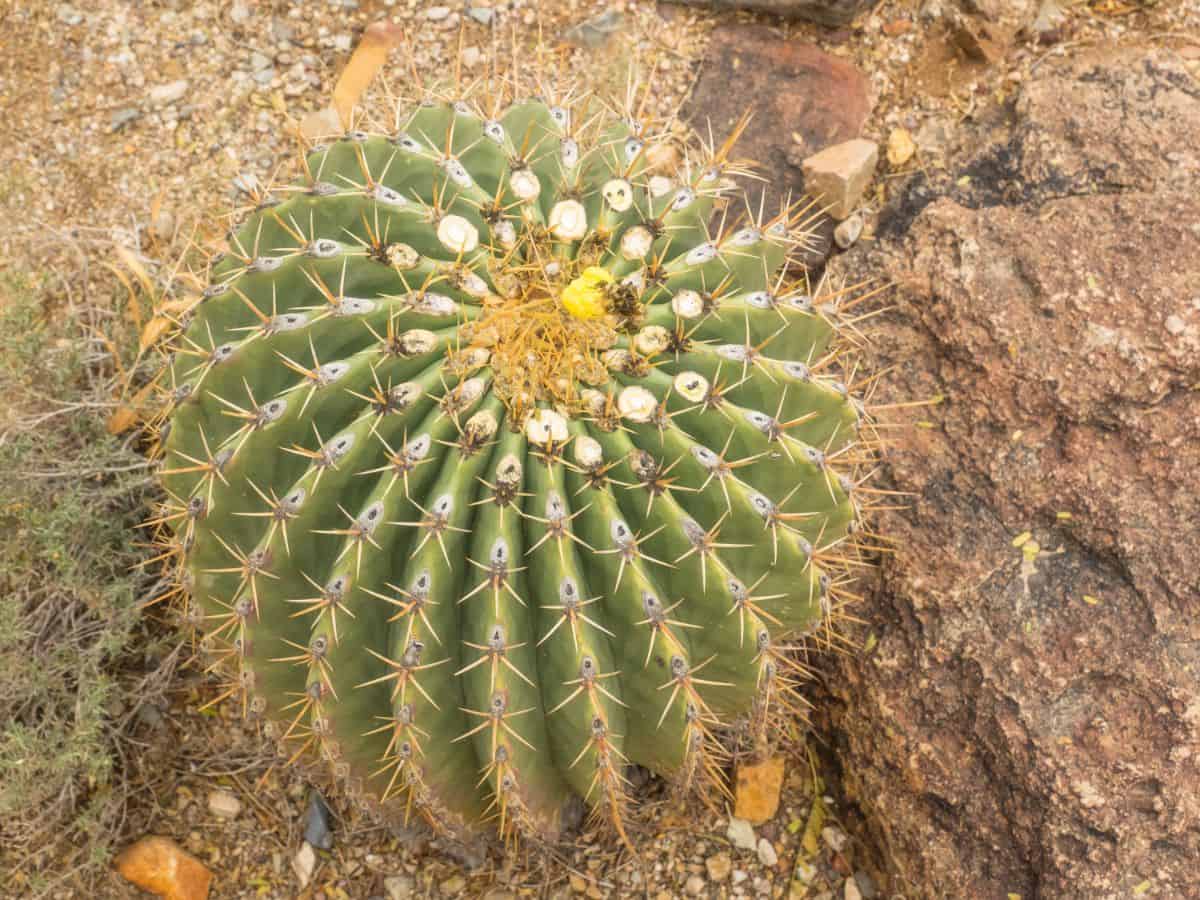
Buy it from:
| Maximum Height: | Up to 10 inches |
| Maximum Width: | Up to 12 inches |
| Watering Needs: | Bottom water weekly if possible. If in the ground, water close to the ground. Prone to rot. |
| Soil Needs: | Grows in most soil types. |
| Light Needs: | Full sun to partial shade |
| Hardiness Zone(s): | Zone 9 and up |
| Spine Type and Ribs: | One 2-inch long center spine with 8 yellowish and barrier-forming radial spines; 12 - 20 ribs |
| Bloom Type: | Spatula-shaped petals and wide open shape; light yellow with some orangish coloration in the middle of the petals |
No, this species is not named after the Alamo or the Alamo City of San Antonio. It is instead named after the Álamos area in southeastern Sonora, which is near Chihuahua. Large specimens are rare to find as this species is a rarity in horticulture outside of its native habitat. It is also a species with very fragile spines, comparatively speaking.
10. Ferocactus latispinus
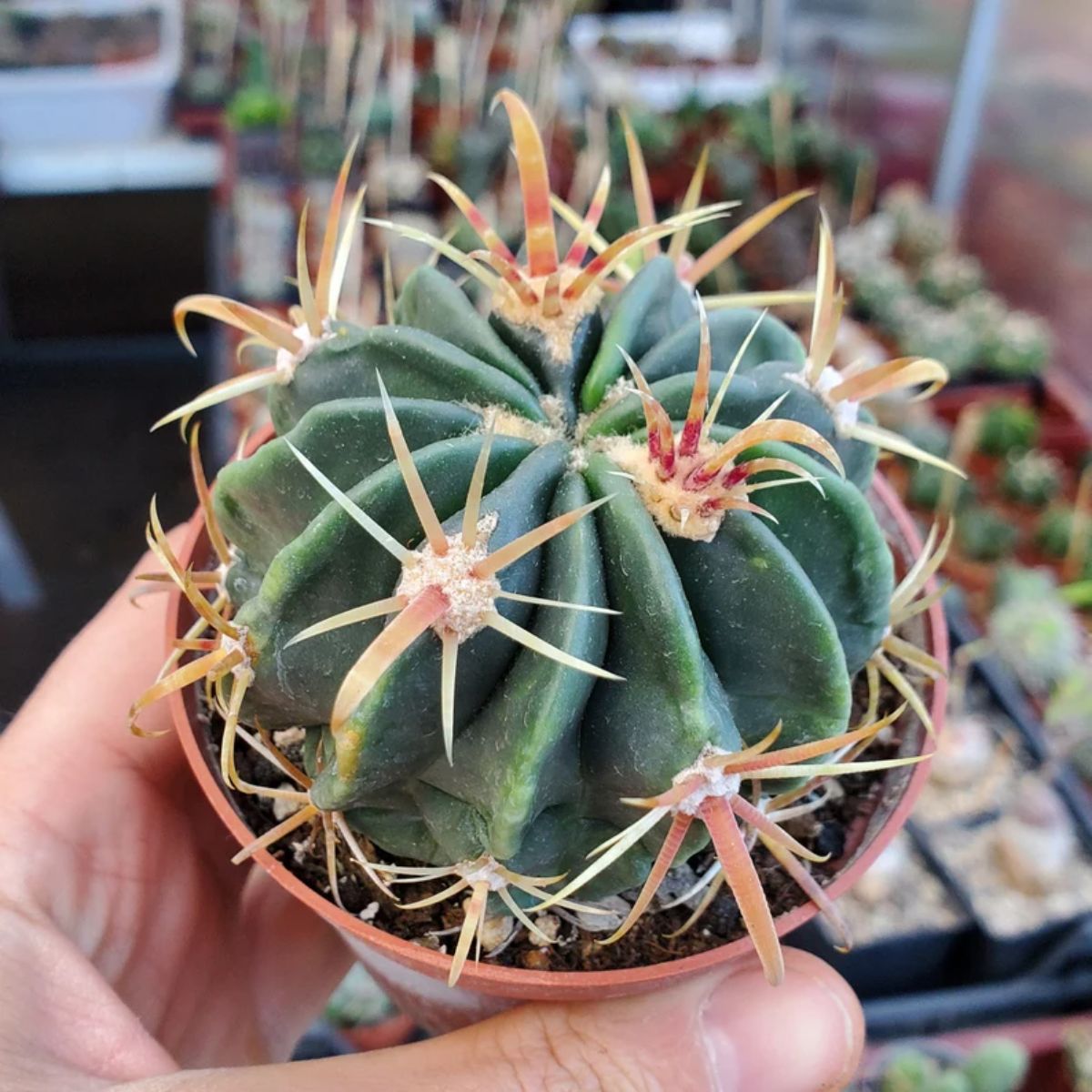
Buy it from:
| Maximum Height: | Up to 13 inches tall |
| Maximum Width: | Up to 18 inches |
| Watering Needs: | Bottom water weekly if possible. If in the ground, water close to the ground. Prone to rot. |
| Soil Needs: | Grows in most soil types. |
| Light Needs: | Full sun to partial shade |
| Hardiness Zone(s): | Zone 9 and up |
| Spine Type and Ribs: | Four central spines that are flattened and ribbed, red in color, with up to 15 narrow radial spines; Usually 21, but can vary from 13 to 23 |
| Bloom Type: | Layered bloom with strong purple, purple-blue, or yellow coloration. |
Going against the grain, the Devil's Tongue Barrel Cactus is known for its thick central spines and its lack of columnar shape. Instead, it tends to take on a more oval shape. Like F. gracilis, this species is also known for its red spines. Some of them are more yellow in the center compared to others, but red will always be present.
11. Ferocactus macrodiscus
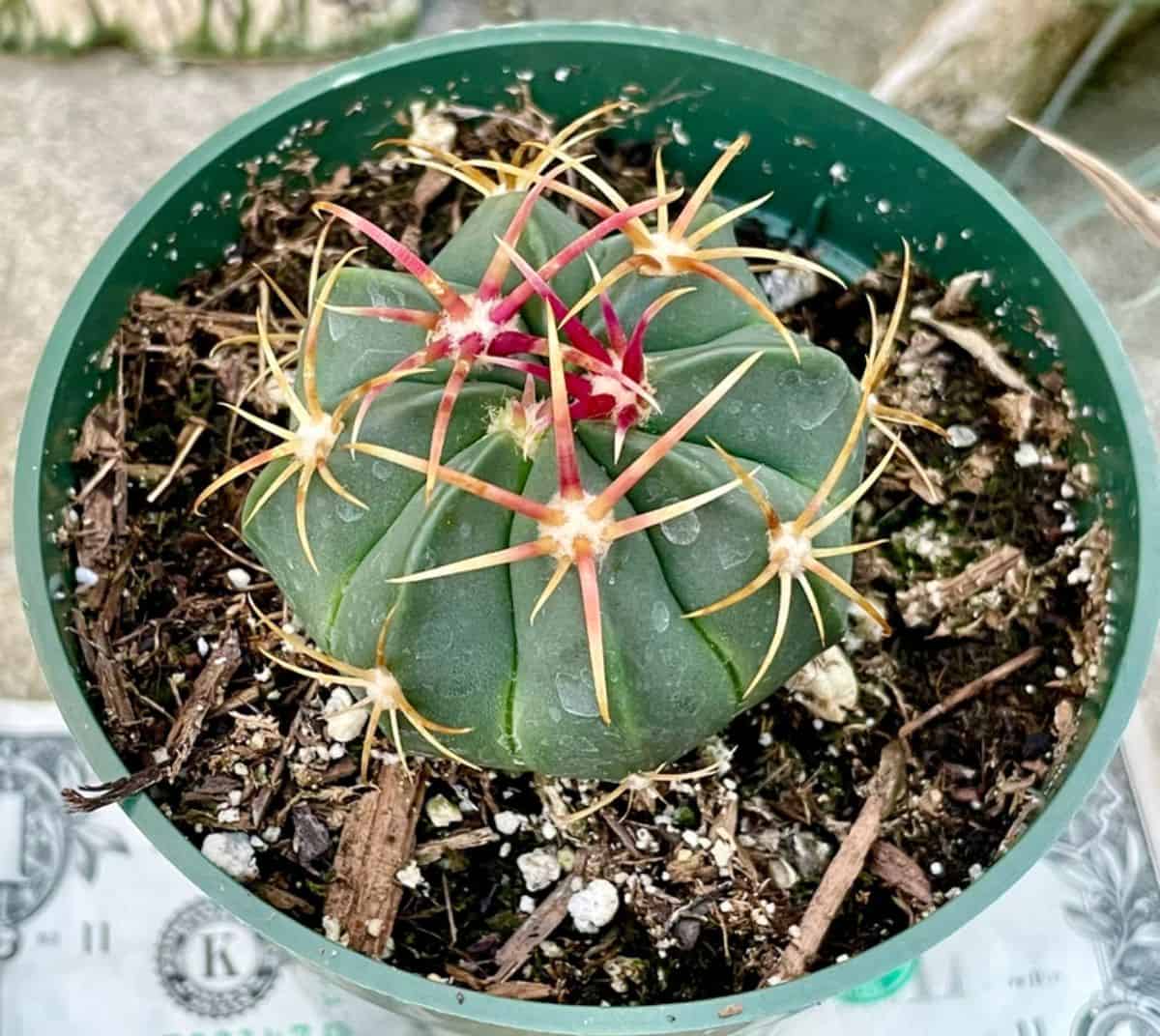
Buy it from:
| Maximum Height: | Up to 4 inches |
| Maximum Width: | Up to 2 feet |
| Watering Needs: | Bi-weekly, water the area around this species. Do not directly water. |
| Soil Needs: | Grows in most soil types. |
| Light Needs: | Full sun to partial shade |
| Hardiness Zone(s): | Zone 9 and up |
| Spine Type and Ribs: | Radial straw-colored spines; 16 - 21 ribs |
| Bloom Type: | Bright pink layered flowers with a magenta center |
The most distinct rebel of the Ferocactus genus, macrodiscus forms a huge hole in the ground with how wide it gets! Since it doesn’t get much taller than a few inches, the impressive pink flowers bloom all along the top of the “column.” Most of the spines are thinner and more fragile, but this species also produces firm, red, and hooked spines as well.
12. Ferocactus peninsulae
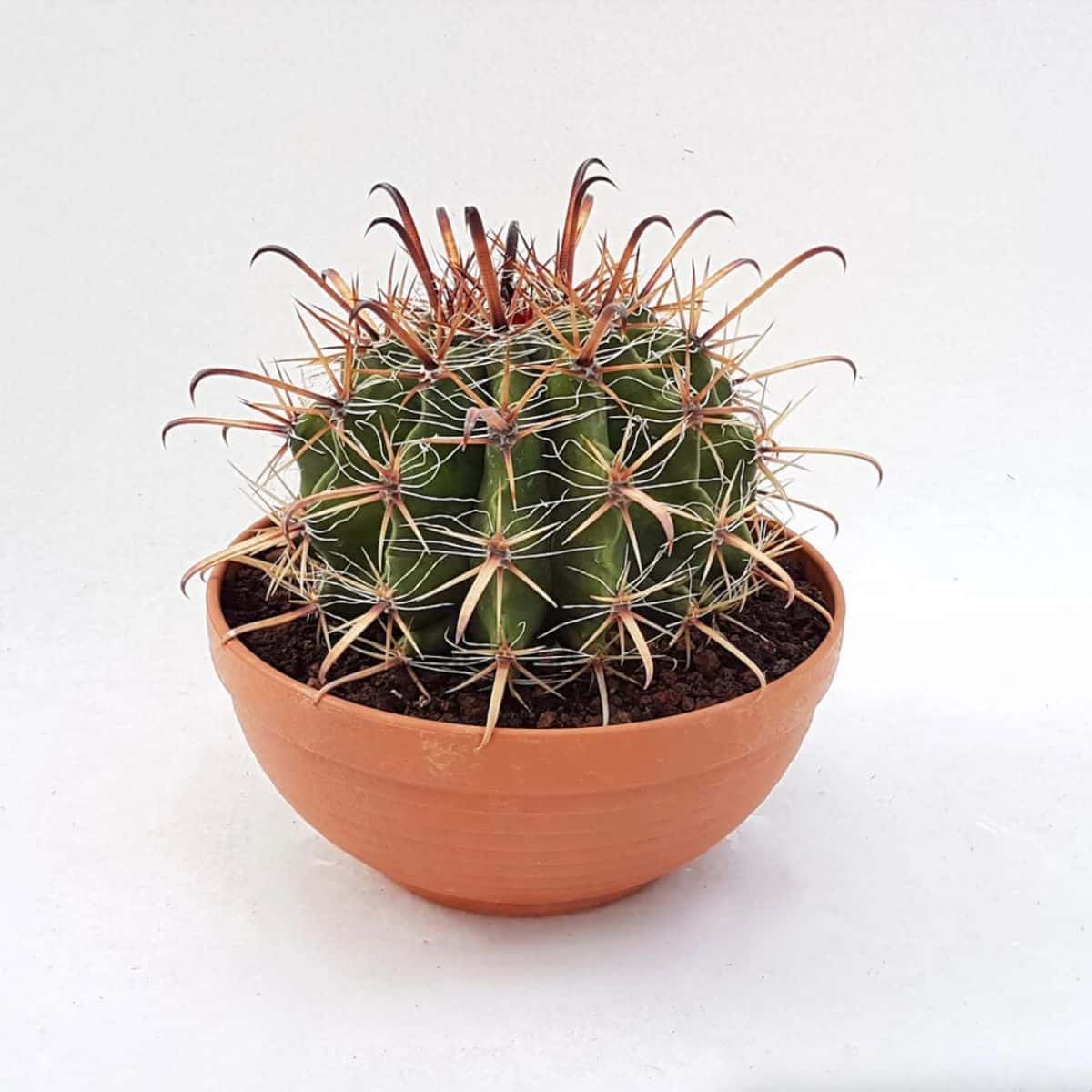
Buy it from:
| Maximum Height: | Up to five feet |
| Maximum Width: | Up to 12 inches |
| Watering Needs: | Bottom water weekly if possible. If in the ground, water close to the ground. Prone to rot. |
| Soil Needs: | Grows in most soil types. |
| Light Needs: | Full sun to partial shade |
| Hardiness Zone(s): | Zone 9 and up |
| Spine Type and Ribs: | 4 flattened and ribbed central spines, up to 8 thin and undulated radial spines; 12 - 20 ribs |
| Bloom Type: | Red to yellow trumpet-shaped flowers with orange-red color along the center of each petal |
The Baja Fire Barrel is similar to the Mexican Fire Barrel; however, it differs in how the flowers grow and bloom. They are more trumpet-shaped, and the red spines grow upwards rather than outwards. Even the radial red spines tend to take an upward turn.
13. Ferocactus pilosus
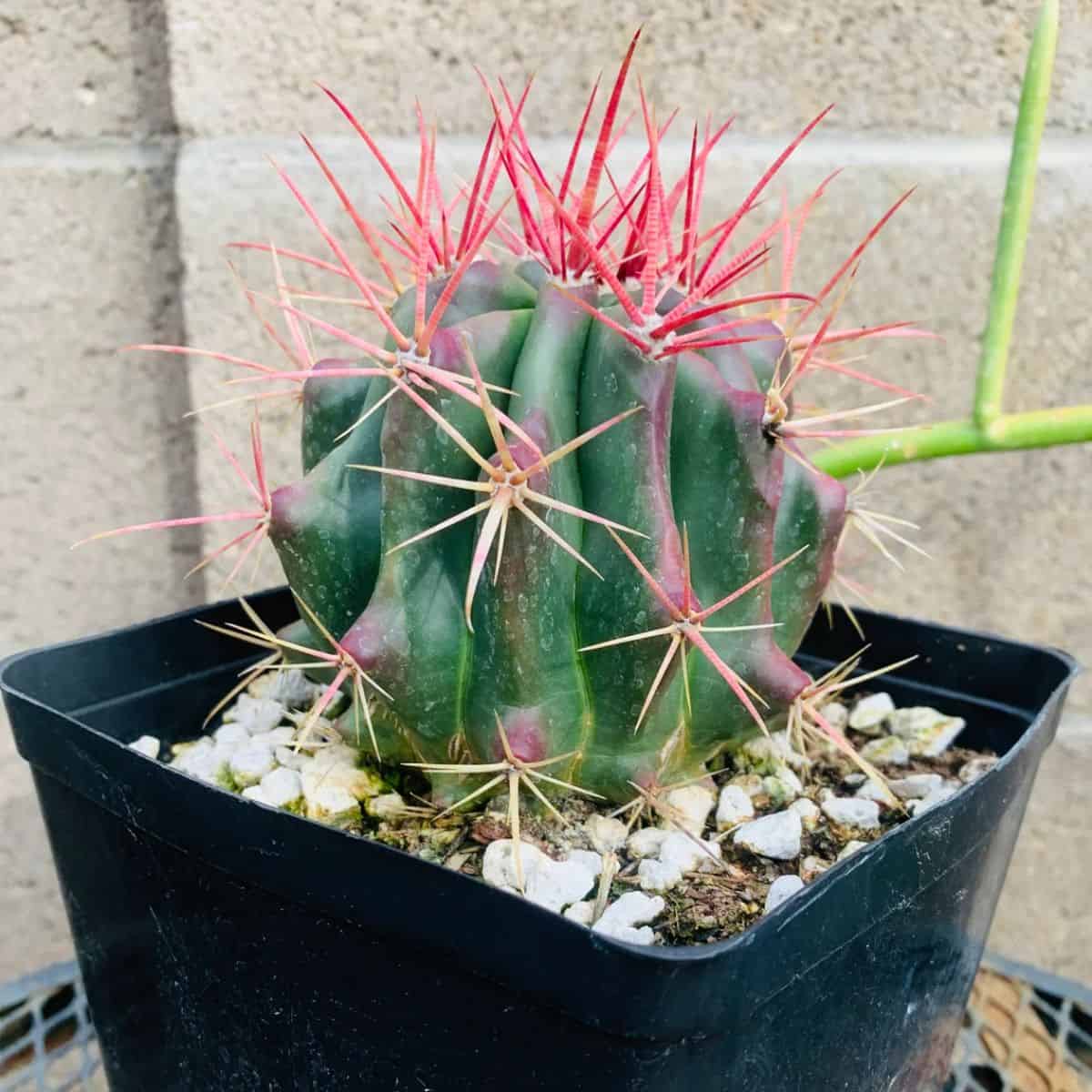
Buy it from:
| Maximum Height: | Up to 4.5 feet |
| Maximum Width: | Up to 16 inches |
| Watering Needs: | Bottom water weekly if possible. If in the ground, water close to the ground. Prone to rot. |
| Soil Needs: | Grows in most soil types. |
| Light Needs: | Full sun to partial shade |
| Hardiness Zone(s): | Zone 9 and up |
| Spine Type and Ribs: | Slightly flattened and red spines, white bristles may or may not be present; 13 - 20 ribs |
| Bloom Type: | Red to yellow multi-layered flower |
The Mexican Fire Barrel Cactus is a mound-building or branching species. What also differentiates this fire barrel from the Baja Fire Barrel is that the spines tend to be more narrow and fragile. The radial spines form a thin net all over the deep green stem, which further highlights the red haze that surrounds it.
14. Ferocactus chrysacanthus
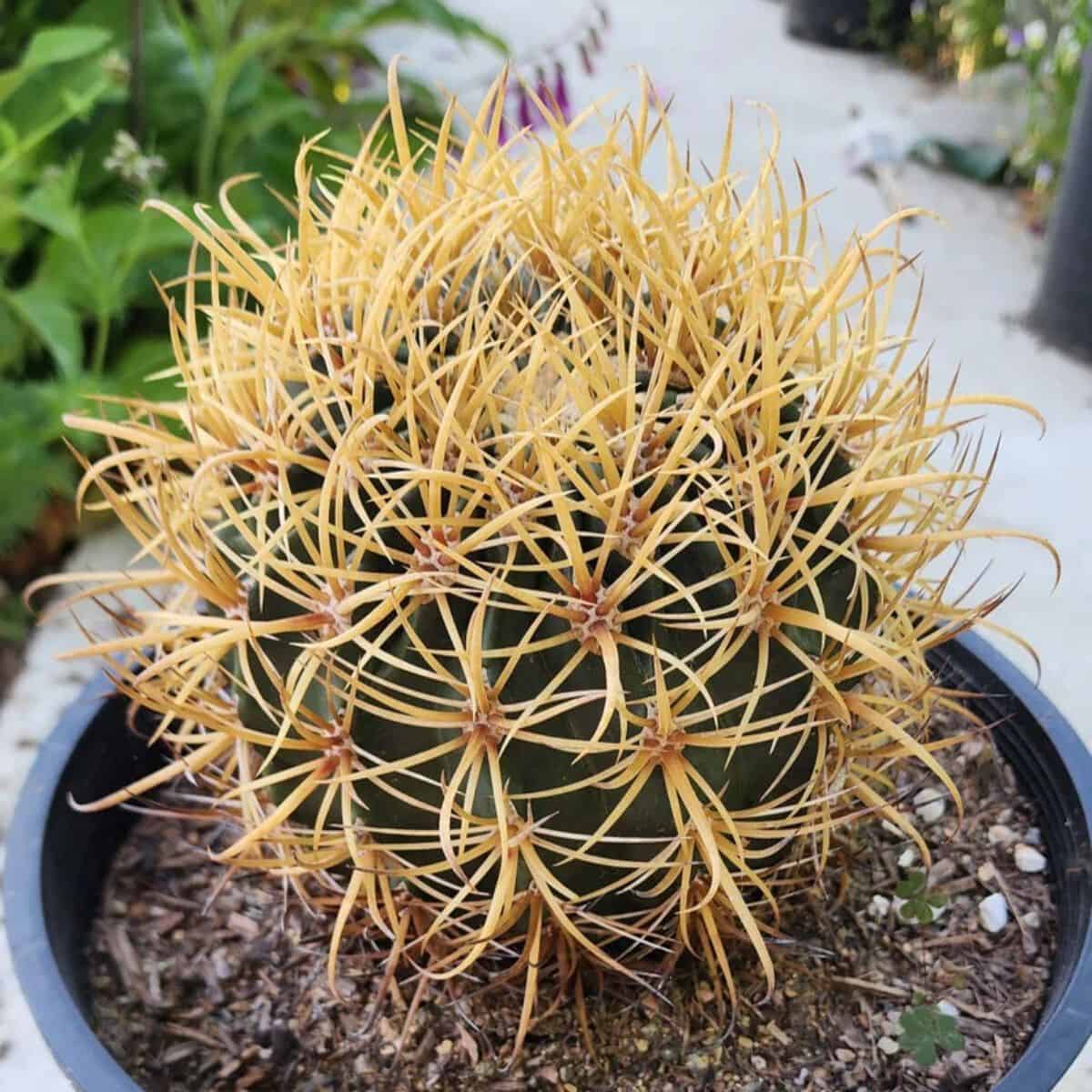
Buy it from:
| Maximum Height: | Up to 3 feet |
| Maximum Width: | Up to 16 inches |
| Watering Needs: | Bottom water weekly if possible. If in the ground, water close to the ground. Prone to rot. |
| Soil Needs: | Grows in most soil types. |
| Light Needs: | Full sun to partial shade |
| Hardiness Zone(s): | Zone 9 and up |
| Spine Type and Ribs: | Up to ten slightly flattened, golden central spines and up to ten white radial spines; 13 - 22 ribs |
| Bloom Type: | At the top or center of the plant, the outer layer takes on a pinkish-brown color, and the inner layers are yellow. |
The Yellow-spined Barrel Cactus, or Golden spined barrel cactus, is considered to be one of the most heavily spined species … with the toughest spines too! If you try to reach in and grab its golden fruit, you’ll easily find yourself in a world of hurt. Use tongs, for sure. Because of how slowly this species grows, it is considered a collectible that can be passed on for generations.
15. Ferocactus cylindraceus
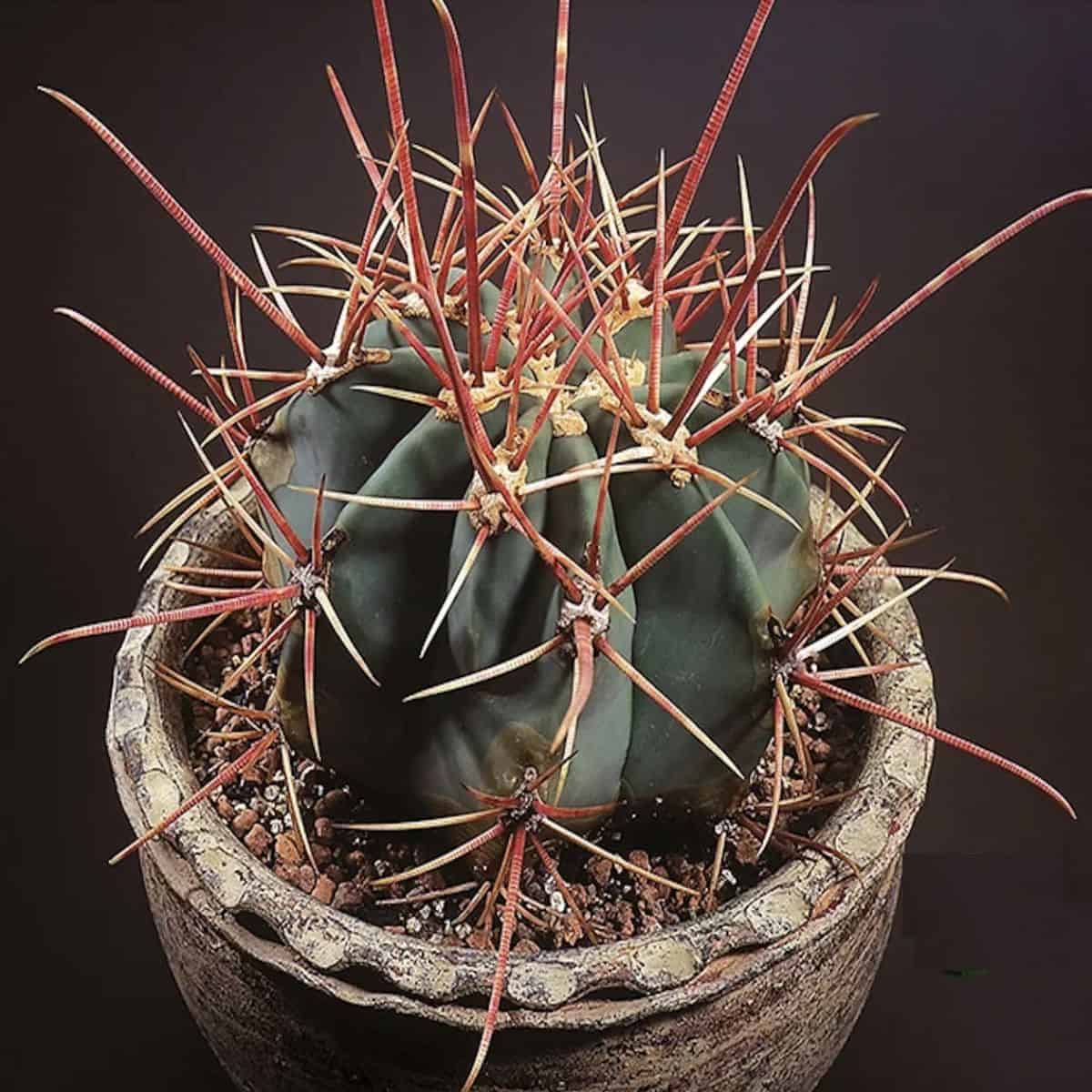
Buy it from:
| Maximum Height: | Up to 4 feet |
| Maximum Width: | Up to 1 foot |
| Watering Needs: | Bottom water weekly if possible. If in the ground, water close to the ground. Prone to rot. |
| Soil Needs: | Grows in most soil types. |
| Light Needs: | Full sun to partial shade |
| Hardiness Zone(s): | Zone 9 and up |
| Spine Type and Ribs: | Flattened and ribbed, forming a case around the plant. Central spines are ribbed, up to 4 inches long; not found. |
| Bloom Type: | Yellow with a red tinge at the top of the plant. |
Last but not least, the California Barrel Cactus holds just as much interest as every other species. In an impressive show of acrobatics, the spines can curve almost a total of 90 degrees! When the spines first appear, they are yellow and are blackened with age. The central radial spines form a dense net around the dark green stem, and very rarely is there a red tinge to them.
Spines turn black with age; spines can hook up to 90 degrees

